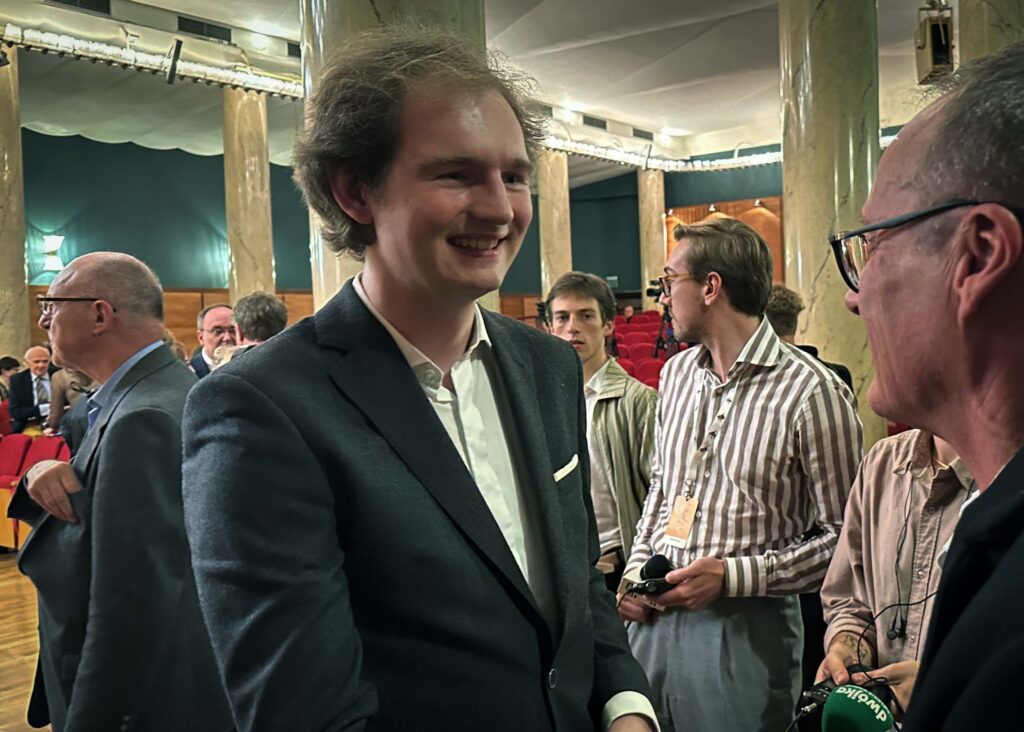Driving an Old Car – The Art of Decoding Historical Instruments
How can we approach and learn about period instruments? We think the best way would be to follow the path of a pianist who actually did and additionally, very successfully. We talked with the second prize winner and winner of the prize for best Polish participant of the 2nd International Chopin Competition on Period Instruments, pianist Piotr Pawlak.

Piano Street has previously covered the recent Chopin Competition on Period Instruments in three articles:
The Real Chopin Shines in Warsaw
Embracing the Past Now – The Messenger Paul McNulty in Warsaw
Watch the Chopin Competition on Period Instruments with us!
Patrick Jovell: Dear Piotr, thank you for your wonderful competition performances and congratulations on your prizes! The Chopin Institute puts a lot of effort in bringing period instrument playing to public attention through numerous recordings and now the second edition of the International Chopin Piano Competition on Period Instruments. Can you tell us your personal path in discovering playing and performing on historical instruments, or ”the real Chopin” on this occasion so to speak?

Patrick Jovell meets Piotr Pawlak after the prize announcements at the 2nd International Chopin Competition on Period Instruments.
Piotr Pawlak: Thank you very much! My path of discovering the beauty of period pianos was also partially a result of the Chopin Institute effort. They invited me for the masterclasses in Radziejowice in 2016, where I had some lessons on period instruments. It was my first meeting with them, and I have to say, it was not love from the first sight (or maybe: first hearing?). At this point in my life I believed that playing those instruments in concert setting does not really make sense nowadays and the only reason to study them was to understand composer intentions better. However, each year I attended those masterclasses and I was more and more interested in those instruments and the unique sound they produce. I was also inspired by people specializing in historically informed performance, by their passion and how they share it with others, especially by Tobias Koch. When the Institute announced the competition, I decided to give it a try. I did not expected to even qualify to the competition, so I was really happy what eventually happened. I have to say, that after competition, I like period pianos even more, as first time in my life I had a possibility to play on such good and well prepared historical instruments. The Pleyel from 1842 was absolutely amazing.
PS: In the first round competitors performed non-Chopin repertoire. You were also offered non-Chopin instruments (i.e. Pleyel & Érard) such as Graf for example. Can you tell us which works you chose in this round and which considerations you had when deciding on which instrument to choose for these works?
PP: For the non-Chopin pieces in this round, I chose Bach’s Prelude and fugue in C sharp minor from DWK I, Mozart’s Fantasie in d minor and Oginski’s Polonaise “Farewell to homeland”. In fact for Bach and Mozart I had almost decided already before the Competition that I would play those pieces on a Viennese instrument. Mozart’s piece because the composer had a very similar piano at his disposal, and Bach’s piece as their sound most closely reminds me the sound of harpsichord and clavichord. Eventually I decided to choose Buchholtz for them, as I felt more secure on this piano than on the Graf. As for Ogiński’s piece I did not want to perform it on a late-Chopin-piano (Pleyel 1842, which I chose for the Barcarolle), and I found out that this piece sounds the best on the Paul McNulty’s copy of Pleyel from 1830.
PS: Second round and the finals contained works by Frédéric Chopin. Can you explain how you navigate technically and soundwise as a pianist playing this repertoire, as compared to when you play on a modern piano?
PP: Period pianos have different capabilities compared to modern pianos. They cannot give full, powerful forte, but on other hand they can produce more variety of colors. They are not so precise technically, but you control everything better as the “path from the finger to the string” is shorter. For me, the most important thing in music is expression – telling the listener feelings and emotions. So, the only thing I have to change is to look for different means to reach the same goal. The most important for me was to balance forte throughout the piece, thinking wisely where to really use it and how to achieve it. The second important thing was revision of pedaling, as on modern and period pianos it give a little bit different qualities. The third thing was the choice of tempi, to still have long lines despite the shorter sound of Pleyel and Érard. In other differences I was just following my intuition.

PS: In the finals you chose to play the e-minor Concerto on the Érard. This more forceful instrument resembles a modern grand in a way but adds other sonic qualities. How do you have to think and act soundwise when performing with and orchestra which sometimes has a tendency to ”eat” the sound of the piano?
PP: I decided to play the final on the Érard, mostly because it had more powerful sound than the Pleyel. The Pleyel had more beautiful sound in piano, but I found that it did not really work in this hall, compared to the chamber hall. Also with Érard it was possible to be audible over the orchestra almost all the time. I was playing the concerto like I was playing a chamber piece. The orchestra was really listening and following me, so I did not have to really care about the balance. I was focusing on the color that is produced with piano melody over the orchestral accompaniment.
Comments